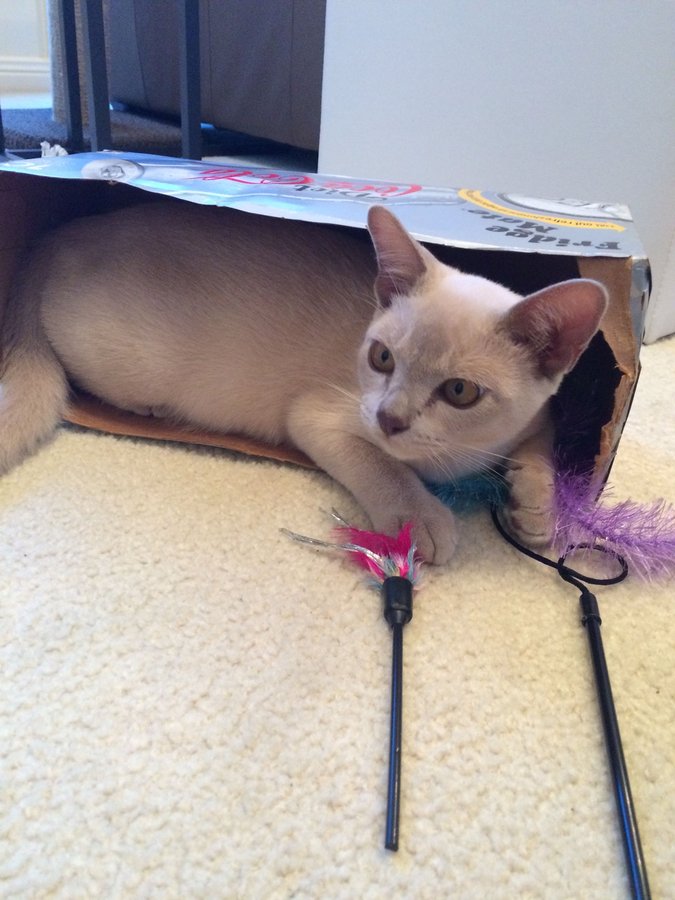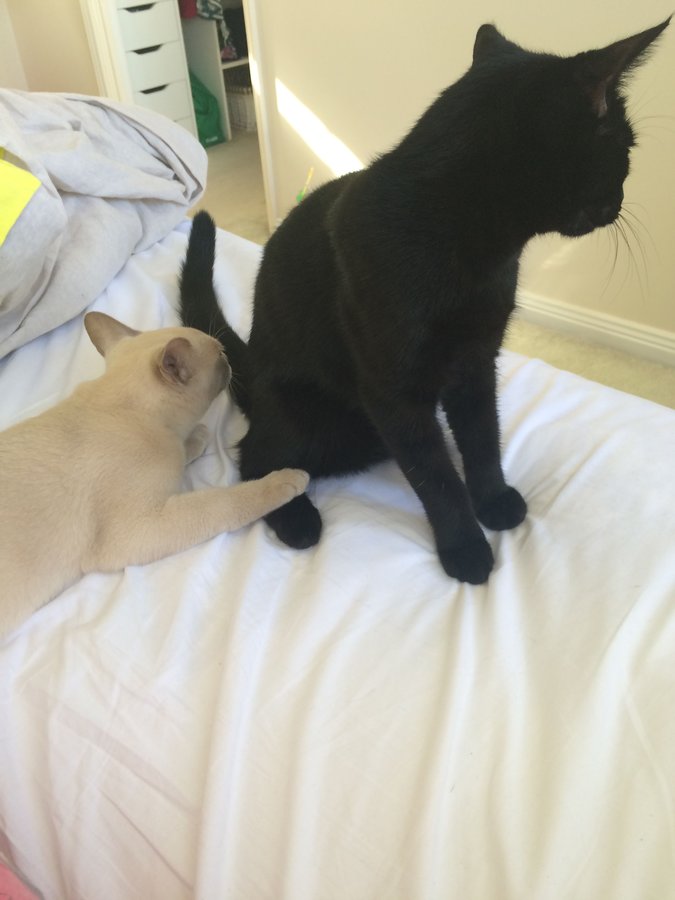- Joined
- Dec 16, 2014
- Messages
- 12
- Purraise
- 6
(My background is kinda long so I have made the 'fighting/playing' parts in BOLD
BACKGROUND
Lippy is my 5 month old black kitty who is EXTREMELY bold, playful and attention-seeking. The kind who basically tries to come in the shower with you because he doesn't understand the concept of 'personal time or space'.
I work during the day and so he is home by himself from 8am to about 6pm on weekdays. So when I got home he was on me like a fly on..... well you get the point. Even after rigorous play sessions (God Bless Da Bird; the only toy that actually tires him out) it is never enough and he wanted more.
So, a very affectionate, playful and active kitty cat.
Flash forward to last weekend and a new little kitty critter joined the household. Another boy, 3 weeks younger than Lippy. Still un-named.
BACKGROUND
Lippy is my 5 month old black kitty who is EXTREMELY bold, playful and attention-seeking. The kind who basically tries to come in the shower with you because he doesn't understand the concept of 'personal time or space'.
I work during the day and so he is home by himself from 8am to about 6pm on weekdays. So when I got home he was on me like a fly on..... well you get the point. Even after rigorous play sessions (God Bless Da Bird; the only toy that actually tires him out) it is never enough and he wanted more.
So, a very affectionate, playful and active kitty cat.
Flash forward to last weekend and a new little kitty critter joined the household. Another boy, 3 weeks younger than Lippy. Still un-named.










